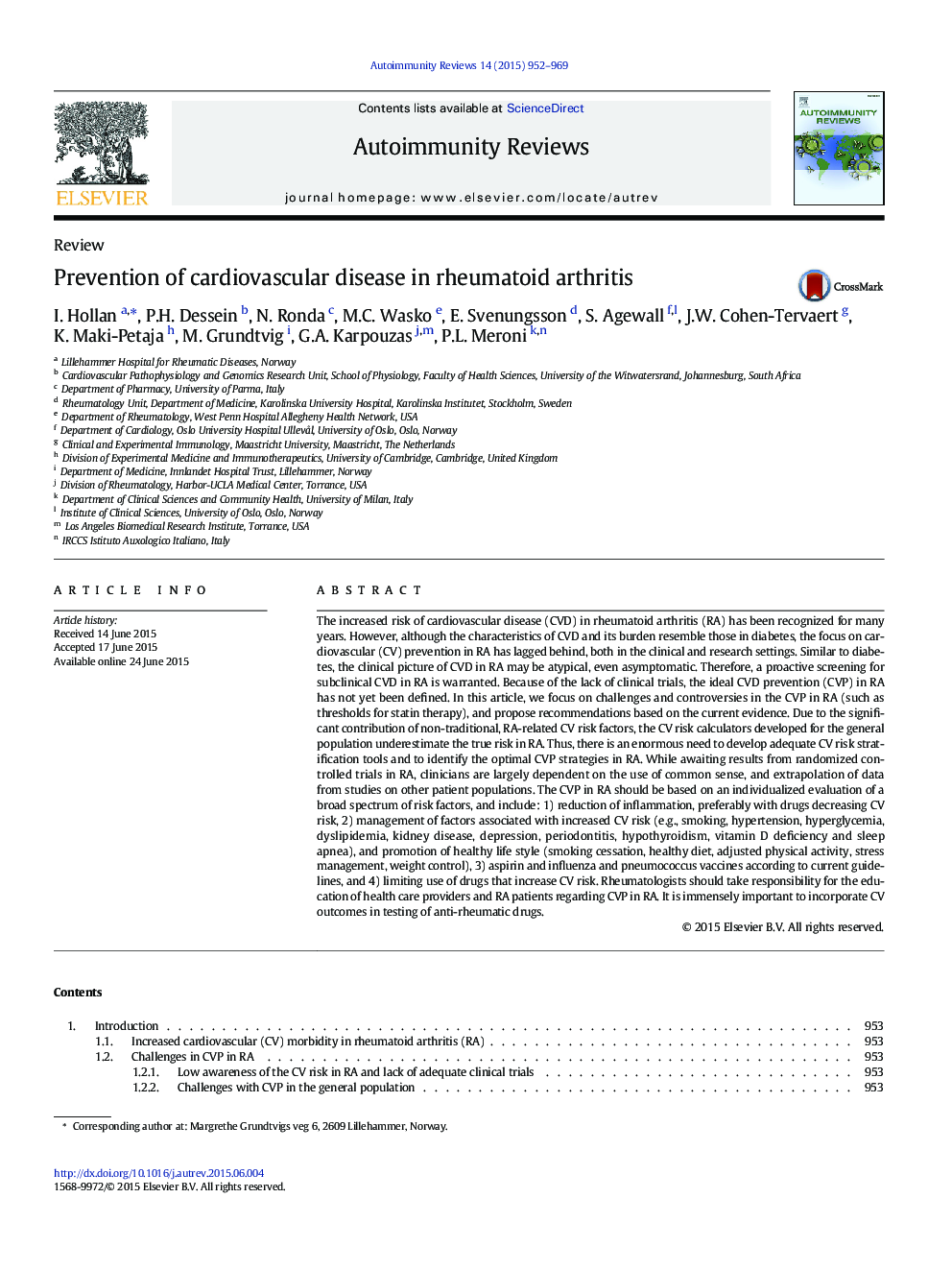| کد مقاله | کد نشریه | سال انتشار | مقاله انگلیسی | نسخه تمام متن |
|---|---|---|---|---|
| 3341568 | 1214221 | 2015 | 18 صفحه PDF | دانلود رایگان |
• Although the CV morbidity in RA resembles that in diabetes, CVP strategies in RA have not been sufficiently implemented into the clinical practice. To improve CVP in RA, there is a need for RCTs elucidating the optimal preventive strategies and for feasible clinical guidelines.
• It is important to incorporate CV outcomes in clinical trials on anti-rheumatic drugs, to search both for protective and deteriorating effects.
• While awaiting results from high-quality RCTs, the CVP in RA be based on available evidence and on careful clinical judgment of the individual patient.
• RA should be considered an independent risk factor of CVD.
• In CVP in RA, there should be a focus on reducing modifiable traditional and non-traditional CV risk factors, including disease activity.
• As CVD in RA is often unrecognized and related to a poor prognosis, a pro-active screening for CVD in RA is warranted.
The increased risk of cardiovascular disease (CVD) in rheumatoid arthritis (RA) has been recognized for many years. However, although the characteristics of CVD and its burden resemble those in diabetes, the focus on cardiovascular (CV) prevention in RA has lagged behind, both in the clinical and research settings. Similar to diabetes, the clinical picture of CVD in RA may be atypical, even asymptomatic. Therefore, a proactive screening for subclinical CVD in RA is warranted. Because of the lack of clinical trials, the ideal CVD prevention (CVP) in RA has not yet been defined. In this article, we focus on challenges and controversies in the CVP in RA (such as thresholds for statin therapy), and propose recommendations based on the current evidence. Due to the significant contribution of non-traditional, RA-related CV risk factors, the CV risk calculators developed for the general population underestimate the true risk in RA. Thus, there is an enormous need to develop adequate CV risk stratification tools and to identify the optimal CVP strategies in RA. While awaiting results from randomized controlled trials in RA, clinicians are largely dependent on the use of common sense, and extrapolation of data from studies on other patient populations. The CVP in RA should be based on an individualized evaluation of a broad spectrum of risk factors, and include: 1) reduction of inflammation, preferably with drugs decreasing CV risk, 2) management of factors associated with increased CV risk (e.g., smoking, hypertension, hyperglycemia, dyslipidemia, kidney disease, depression, periodontitis, hypothyroidism, vitamin D deficiency and sleep apnea), and promotion of healthy life style (smoking cessation, healthy diet, adjusted physical activity, stress management, weight control), 3) aspirin and influenza and pneumococcus vaccines according to current guidelines, and 4) limiting use of drugs that increase CV risk. Rheumatologists should take responsibility for the education of health care providers and RA patients regarding CVP in RA. It is immensely important to incorporate CV outcomes in testing of anti-rheumatic drugs.
Journal: Autoimmunity Reviews - Volume 14, Issue 10, October 2015, Pages 952–969
